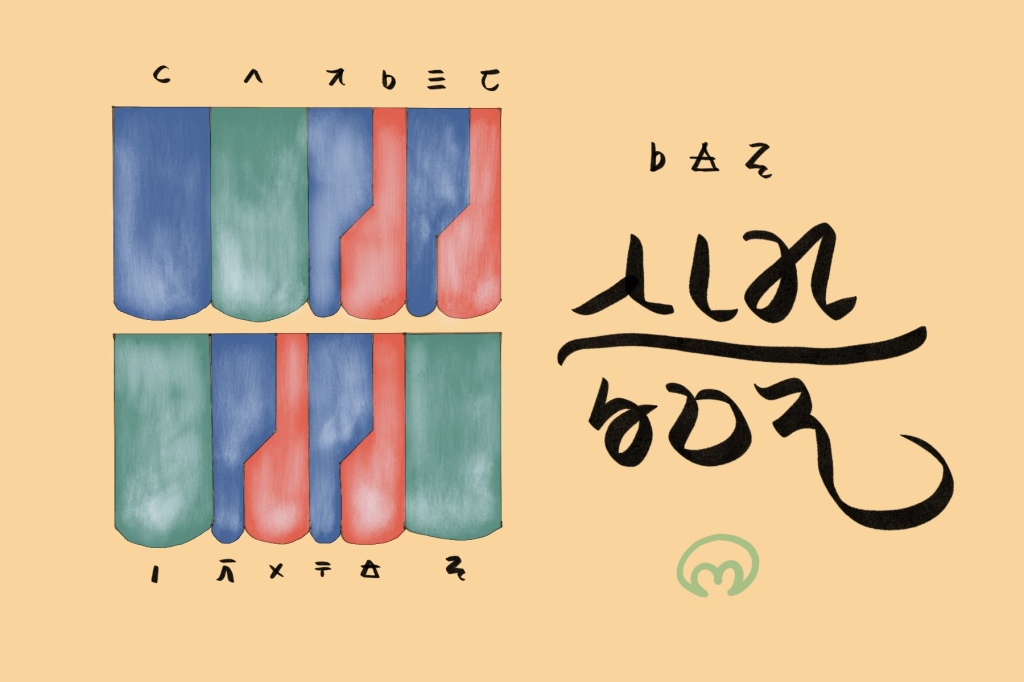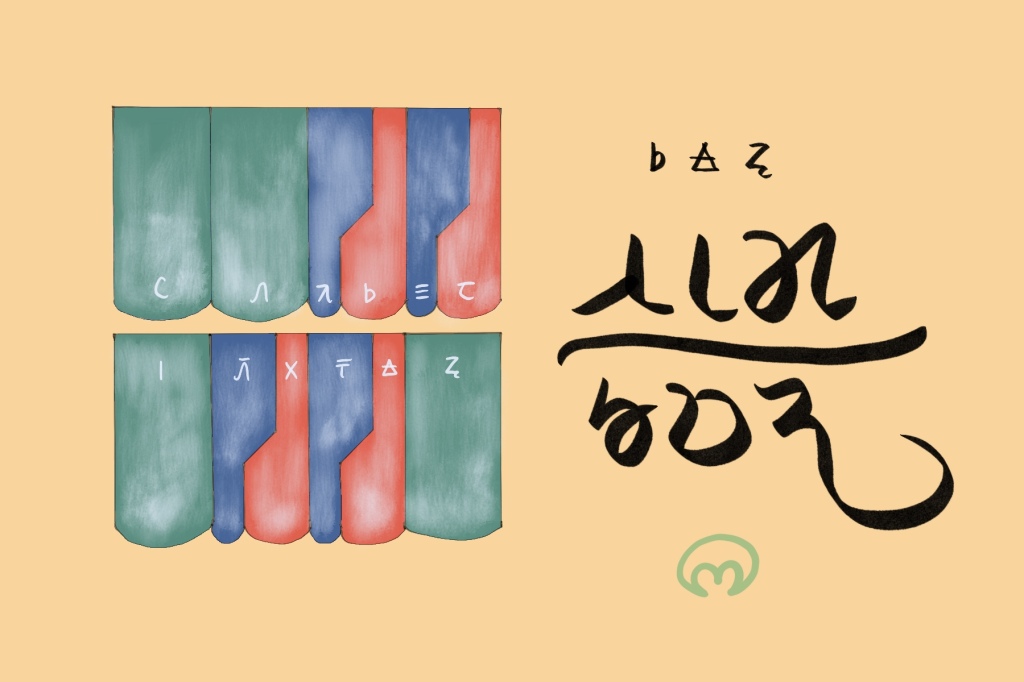This is an idea for the design of the Verdurian musical keyboard (specifically of the teclora, or ‘clavier’), dressed up as another Žambey advert.

I am not married to this design; in fact I’m sure it will change significantly! However, it’s a useful starting point, and illustrates some key ideas in Verdurian music theory.
Like our keyboard, there are two rows of keys, arranged horizontally in front of the player; unlike ours, their ordering is not purely left-to-right (regardless of whether the next key is a black/upper-row or white/lower-row key), but proceeds left-to-right along the lower row first, then starts again at the left key of the higher row. The whole cell then repeats sequentially, such that the key right of Ažirei (the bottom right key in this diagram) will be the next Enäron (an octave above the bottom-left key), a jump of a perfect fifth. The upper row is literally higher than the lower one, like organ manuals, though I think a little closer, so there is not far for the fingers to jump from one row to another.
The keys are coloured; whilst this is not obligatory, some kind of red/blue colouring system is common across Eretald, where notes which are perceived to lead naturally ‘upwards’ (which we might describe as ‘major’) are coloured red, and those which are perceived to lead naturally downwards (which we might describe as ‘minor’) are coloured blue. The key note, known as Enäron, its natural complement the perfect fifth, known as Fidra, and the latter’s inversion, the perfect fourth, known as Ažirei, are here coloured green to represent their fundamentality and expected inclusion of at least two (if not all three) of them in the majority of Eretaldan scales.
This design provides well for playing scales in the home key, as the octave lies easily under one hand. To play in the right hand the scale ‘ecoafešne’, which we would recognise as a major scale, a player of this teclora would play the green and red notes in sequence, starting at Enäron, and using the fingering 1-2-3-4 (swap to top row, left-most key) 2-3-4 (swap to bottom row, next cell to the right, left-most key) 5. Chordal playing is well supported, as, again, the whole octave lies easily under one hand; Verdurian keyboard players will be particularly used to whacking down low fifths with their pinky and ring finger of their left hand.
How do you play in keys other than the one which this is optimised for? With some difficulty: a scale from, say, Osureon, is going to run into nasty fingering issues, or at the very least feel confusing because the keys are presented in a fairly strict hierarchy describing their relationship to the home key Enäron. Eretaldans will get round this in several ways. One, by refining the base design over time (I have many ideas for how it would develop). Two, by dropping the colours, as they are technically unnecessary and may impede a player’s processing ability for playing in distant keys. (I feel they’ll be retained in some contexts, as an aspect of traditional material culture that is a bit inconvenient for modernity, but tolerated for tradition’s sake.) Three… an idea I’m toying with, where a lever is used to shift the entire keyboard one string’s width over the string bed, to halve the number of unique fingering patterns that need to be learned (though adding significantly to the internal complexity of the instrument, as spare strings will be needed, probably on a different level to the others). Four – lots of practice! Eretaldan keyboard players will no doubt master scale-playing in two main patterns – those beginning on the Enäron key, and those beginning on the Išira key (the first of the higher row) – before moving on to mastering other keys.
All instruments have their challenges, and technical strengths. This keyboard is particularly good at drone music, accompanying Caďinorian chant and folk tunes, and playing excitable riffs in a small set of home keys. It is fully chromatic and is of course capable of playing in other keys, though not with enormous intuitive ease. It emphasises improvisatory skill in any of the many various scales and modes of that home note which have comprised Eretaldan musical interest for centuries, much as do instruments of the Indian subcontinent. However, Eretaldan music becomes increasingly harmony-obsessed into the modern era, and likely this traditional design may well be overtaken by a more ‘even’, less hierarchical design some time in the Almea+400 era.
Addendum: Žilir Žambey didn’t invent the instrument. I think it sprang up not that long before the Žambeys, during the craze for things Xurnese that began in the late 33rd century with Queen Elena’s mission to Xurno. The isometric design is inspired by the (much more complex, but reminiscent) Xurnese organ console layout. Žilir was just a pioneer of mass marketing and mass production; he liked to put his stamp on everything. Perhaps he innovated an aspect of this design, such as the key shapes.

